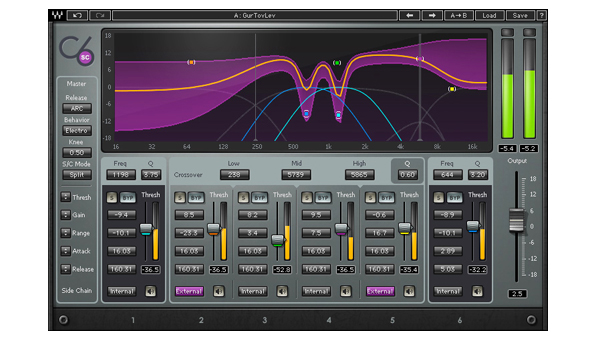
Money Channel Evolution
Vocal compression is a trademark of pop vocals. and yesterday’s analog front of house engineers always inserted a vocal compressor, ranging from dbx and Drawmer standbys to vintage or boutique tube and optical compressors.
Singers hate compression, but engineers use it to create the “studio sound” that exemplifies pop music by reducing the natural dynamic range to something that can sit comfortably in a mix while a singer goes from a whisper to a scream and the band moves from acoustic ballads to up-tempo rockers. Without compression, even Tony Bennett would startle the blue hair in the front row.
Besides a compressor, inserting a graphic EQ into the lead vocal channel is an old trick that allows quick EQ choices beyond a console’s 4-band EQ. Enterprising engineers would even insert one channel of a stereo GEQ and use the other channel before the compressor’s side-chain or “detector” input, causing a strident part of the singer’s upper register to be compressed early by pushing that frequency in the detector.
However, emphasizing a frequency in a compressor’s side-chain still causes the entire signal to be compressed. The move towards brighter-sounding condenser vocal mics and a compressor’s difficulty reducing transient sibilance encouraged the use of dedicated de-essers to keep live vocals sounding natural.
Outboard de-essers provide a single tunable band of dynamic EQ focused to reduce very high frequencies in the 4 kHz to 10 kHz sibilance region. Soon the idea of dynamic EQ for other frequencies became popular and the BSS 4-band DPR-901 became the hallmark FOH outboard vocal processor in the 1990s.
Touring FOH engineers have also used premium multi-function studio “channel strip” processors that combine a mic preamp, compressor, de-esser and/or EQ. There are also a variety of channel strip plugins and digital live sound environments for building custom strips from a wide variety of plugin emulations.
Many engineers call the Waves C6 (below) their one indispensable plugin, reducing and even replacing vocal channel EQ. The C6 is a six-band compressor with a “paragraphic” user interface. It combines four channels of multiband compression with two additional floating bands that can be used for de-essing sibilance and de-popping plosives. Multi-band compression is also standard built-in processing on many premium digital consoles.
Monitors
A chanteuse will often have repertoire with a large vocal range and phrases ending in big notes. As singers move from their lower to upper register, their voice responds differently and tailoring the sound system’s response to match produces smoother transitions.
Sustained notes to which vibrato is added produce rich overtones. Singers benefit from frequency response tilted towards the highs in their monitors to help them control register change and vibrato.


